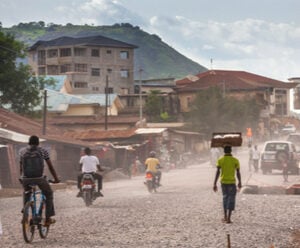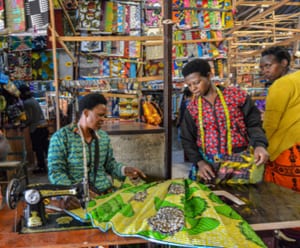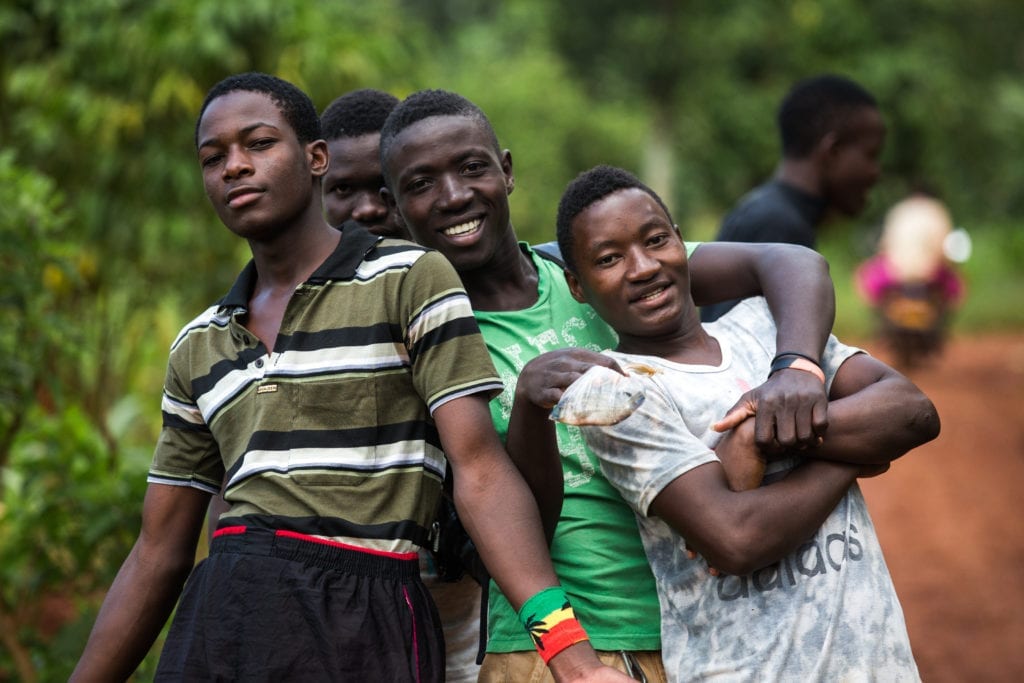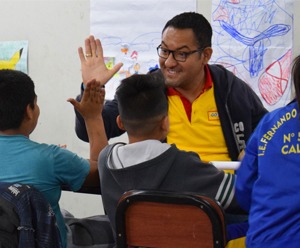
The solution to Uganda’s youth unemployment crisis

Where many economies across the globe are grappling with the challenges of an aging and diminishing population, developing Uganda is brimming with potential.
The country boasts the world’s second youngest population after Niger, with more than 75 percent of its population aged below 30 years old. Along with a stable political climate and large oil reserves, it seems to have the ingredients for success.
Yet, the East African nation is teetering on the brink of collapse.
This is because its youthful population, a source of pride for the country, has inadvertently also become a burden on the economy. Due to a critical skills gap, the rising youth unemployment rate is threatening to derail Uganda’s growth.
At 13.3 percent, the country has one of the highest youth unemployment rates globally. For every 40,000 students that finish college, only 8,000 end up getting jobs.
To make matters worse, the country is expected to see a population explosion over the next few decades, with the highest population growth in the world. The current population of 27.7 million is forecast to grow by almost five times to reach 130 million by 2050.
But the good news is that the public and private sectors are sitting up and taking notice of the problem. To avert a crisis, players from both fields have been working to set the country on the right track.
Too many young people, too few jobs
When Yoweri Museveni took over as Uganda’s president in 1986, the landlocked country was in complete disarray.
In the aftermath of the Ugandan Bush War that had begun six years earlier, more than 1.4 million people were displaced, and the economy was experiencing its worst recession in decades.
Realizing that the only way forward was to attract key foreign investments, President Museveni and his team re-positioned the private sector as the country’s main driver of economic growth and employment creation.
Almost instantly, the results began to show.
Foreign direct investments in the country rose from zero in 1990 to a record US$1.2 billion (€1.07 billion) in 1995. On top of this, inflation levels, which had peaked at 190 percent in 1987, plummeted to almost 26 percent by 1991.
But the change in Uganda’s economic fortunes did little to produce job opportunities for its youth because they lacked the skills the market needed — an issue that persists even today.
The International Labor Organization attributes this to a critical skills gap between the country’s workforce and its schools. As colleges and training institutions continue to produce graduates whose skills do not match current market needs, more and more youths are finding it difficult to land jobs.
The situation is grim. A 2015 study by the same organization revealed that the proportion of unemployed youths had risen from 12.3 percent in 2013 to 18.6 percent in 2015, while recent data by the African Development Bank painted a much gloomier picture, placing unemployment figures at up to 83 percent of the nation’s youth population.
Skilling the youth
To stem the issue of youth unemployment, the government has introduced a slew of strategies to meet the short- and long-term targets for social and economic development.
One such initiative is the Youth Livelihood Program, launched in 2013. With funding support of almost US$2.4 billion from the Ugandan government, the program aims to empower poor and unemployed youth by providing them with skills development, and livelihood and institutional support.
Another initiative is the Skilling Uganda: Business, Technical and Vocational Education and Training Strategic Plan 2011-2020, explicitly directed at reducing the country’s skills gap. The rationale behind the plan is to encourage a mindset shift towards skills development, and create employable skills and competencies that fit the labor market.
Meanwhile, private sector players are also doing their part to help tackle youth employment, including tackling the root of the problem: education.
DHL Express, DHL Global Forwarding and DHL Supply Chain, as part of the Deutsche Post DHL Group, have partnered with Teach For Uganda to provide equal education opportunities and boost employment for young people in Uganda.
It marked the Group’s 18th collaboration with the Teach For All initiative, a global network of locally rooted organizations with a common vision to eliminate educational inequality, and the first such collaboration in Africa.
Under the partnership, DHL employees will volunteer alongside more than 36 Teach For Uganda representatives to help at least 15,000 students across Uganda.
“We are looking at giving the youth exposure and access to business leaders as well as skills-based training,” Zachary Mukwaya, General Manager of Country Operations Uganda at DHL Supply Chain, said.
“Over time, as the interactions grow between DHL volunteers and the Teach for Uganda students, we hope to nurture a cohort of youth who are more confident, focused and own the skills needed to move forward in their careers.”
Since 2013, DHL has also been supporting SOS Children’s Villages Uganda, with which it runs an incubator program educating young entrepreneurs about business processes, and offers mentoring or internship opportunities in a professional environment.
Hope for a troubled nation
As the public and private sector players put their heads together to solve Uganda’s unemployment troubles, at least one group of young men and women are taking matters into their own hands: the social entrepreneurs.
Instead of waiting for jobs, they have decided to create livelihoods of their own, while helping to uplift the lives of others. Solar Sister, a rising star in the country’s social entrepreneurship scene, is one of them.
Pitched at women in underserved communities, the enterprise provides training and support to help the women run their own clean energy businesses, such as providing solar light and clean cooking stoves.
For founder Katherine Lucey, the cause is clear.
“We coach them to learn to identify their business costs and to learn how to be profitable and run sustainable businesses,” she told The Guardian in a 2016 article. “We empower them to know that the solutions are in their own hands.”
With active involvement on all fronts, Uganda has little stopping it from fulfilling its potential and continuing its path to economic recovery.
ALSO WORTH READING














 English
English